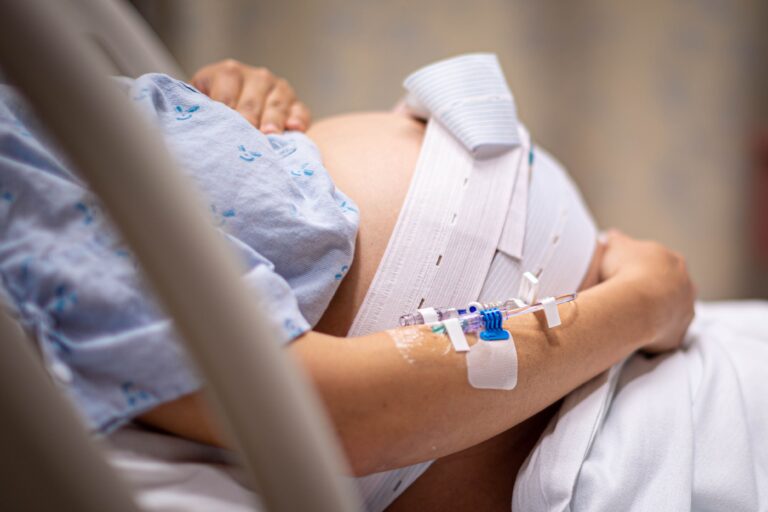What is sepsis?
Sepsis is when an existing infection gets considerably and overwhelmingly worse. It is a potentially life-threatening condition. Without quick treatment, sepsis can lead to tissue damage, multiple organ failure and death.
When you have an infection, in normal circumstances your immune system keeps the infection limited to one place. The immune system releases white blood cells to fight the infection, although sometimes the infection is fought with the help of medications such as antibiotics, antivirals, antifungals or antiparasitics.
While your system is fighting this infection, a series of biological processes occur, including tissue swelling (known as inflammation) which helps prevent the infection from spreading.
Sepsis occurs when your body has an overactive, extreme response to the infection instead.
What causes sepsis?
Sepsis is caused when an infection quickly spreads to other parts of your body, causing inflammation across your entire body. This causes your immune system to go into overdrive, triggering changes in your body, damaging tissues, interfering with blood flow and potentially damaging multiple organ systems.
The subsequent interruption in blood flow could see it progress to septic shock. In this case, there’ll be a dramatic, dangerous drop in blood pressure and could lead to death.
Researchers are still investigating what causes sepsis, but they have found that it can be triggered by an infection in any part of the body, although the most common sites are the lungs, urinary tract, abdomen and pelvis.
Who is most at risk of sepsis?
According to the UK Sepsis Trust, there are around 250,000 cases of sepsis a year in the UK. At least 46,000 people die of sepsis every year.
Anyone can develop sepsis after an injury or infection, however you are more likely to develop the condition if you’ve recently been in hospital. For example, you may have:
- Recently had surgery or a serious illness
- Had a urinary catheter fitted
- Stayed in hospital for a long time
People who have a higher risk of developing an infection are at a higher risk of developing sepsis. It is most common and most dangerous for:
- Babies and elderly people
- People with a weakened immune system
- Pregnant women
- People who have chronic conditions such as diabetes, kidney and lung disease
- People with cancer
The only way to prevent sepsis is to prevent infections from occurring in the first place. Once an infection occurs, the only way to prevent it is by treating the infection seriously until it is completely gone.
What are the signs and symptoms of sepsis?
There are a few common signs and symptoms of sepsis that you should keep an eye on if you’ve recently been in hospital, had an infection, or had surgery. If you’re not getting better after surgery or if an infection is getting worse, you may be getting sepsis.
You can either use the TIME acronym or the SEPSIS acronym to remember the signs and symptoms of sepsis, both detailed below:
Use the TIME acronym to remember the most common sepsis symptoms
- T: Is your temperature higher or lower than normal? Is your skin abnormally cold to the touch?
- I: Do you or did you have any signs of infection?
- M: Has your mental status changed? Do you feel confused, sleepy, or distressed?
- E: Do you have any extreme pain?
Use the SEPSIS acronym to remember the most common signs of sepsis
- S: Do you have slurred speech or are you confused?
- E: Do you have extreme shivering or muscle pain?
- P: Have you not passed urine all day?
- S: Do you have severe breathlessness or are you breathing very fast?
- I: Does it feel like you’re going to die?
- S: Is your skin mottled or discoloured?
If you or your child has any of the above symptoms, call 999 or go to A&E immediately.
What are the treatments for sepsis?
If sepsis is detected early before it affects vital organs, treatment could be as simple as antibiotics taken at home. Most people who have the condition detected at an early stage make a full recovery.
Almost everyone who has severe sepsis or are in septic shock will be admitted into hospital. Some may be admitted to an intensive care unit (ICU). Treatment varies depending on the site of infection, cause of initial infection, the organs affected and the extent of any damage.
People with severe sepsis may be very ill and the condition can be fatal. But, if it is identified and treated quickly – within an hour of diagnosis – most people make a full recovery with no lasting problems.
Treatment typically includes:
- Antibiotics to fight the infection
- Intravenous fluids given through an IV drip
- Administering oxygen if the patient is out of breath
How long does it take to recover from sepsis?
The amount of time it takes to fully recover from sepsis varies depending on:
- The length and severity of the condition
- Your overall health and fitness before getting sepsis
- How much time you spent in hospital
- Whether you needed treatment in an ICU
During your recovery period, it’s not unusual to feel tired, weak, anxious, depressed, have a lack of appetite and to have lost weight. You may also find that your skin is dry, itchy or peeling and that your nails and hair are weaker too. Generally, these problems should improve in time.
What can I do to recover from sepsis at home?
You may have left hospital with some exercises that you can do at home. Slowly build up your strength by doing those exercises, although anything to help you rebuild your strength will be useful, such as walking up stairs or going for short walks. That said, don’t overexert yourself, and make sure to rest when you’re feeling tired. You may find it useful to keep a journal to keep track of how you’re doing.
What to expect after recovering from sepsis:
After recovery, some people may find they have physical or psychological problems, including:
- Feeling lethargic or tired
- Muscle weakness
- Swollen limbs
- Joint pain
- Chest pain or breathlessness
- Anxiety
- Poor concentration
- Recurring infections
These long-term problems are known as post-sepsis syndrome (PSS), which can affect some people for up to two years afterwards.
What is sepsis negligence?
Early diagnosis and prompt treatment are vital to preventing the condition from getting worse or causing permanent injury. Unfortunately, early signs and symptoms of sepsis can be very mild, or mimic other illnesses, leading to missed or incorrect diagnoses. If your doctor or health professional was unable to spot signs of sepsis, it could lead to the condition becoming worse, or even life-threatening. Sepsis negligence can also occur if sepsis had been identified but not treated quickly and effectively.
How I can receive sepsis compensation after negligence?
If you believe your sepsis was caused due to incorrect diagnosis or delayed treatment, or if you’ve had long-lasting issues afterwards because of delayed treatment, you might be able to claim for compensation. Sepsis negligence cases have cost the NHS around £2 billion a year in England alone; showing how pervasive the issue can be.
As medical negligence solicitors, we understand the devastating effects of sepsis negligence, affecting both the patient in question and their family. Contact us for practical support and guidance on how to make a claim when it comes to medical negligence for sepsis.
Dr Ron Daniels from the UK Sepsis Trust tells us more
Our Associate Solicitor Ipek Tugcu sat down with Dr Ron Daniels, Founder and Chief Executive of the UK Sepsis Trust. In their conversation, they cover:
- how to spot signs of sepsis
- how to persuade your doctor to test you for the condition
- why children are particularly at risk
- the long-term complications and psychological trauma that can follow
Watch the video below to learn more.





















